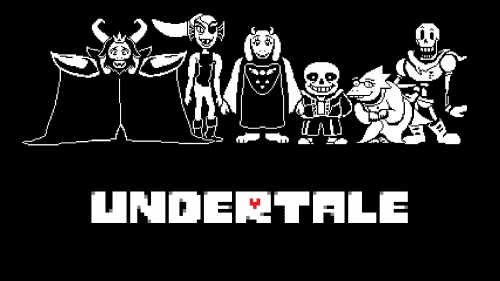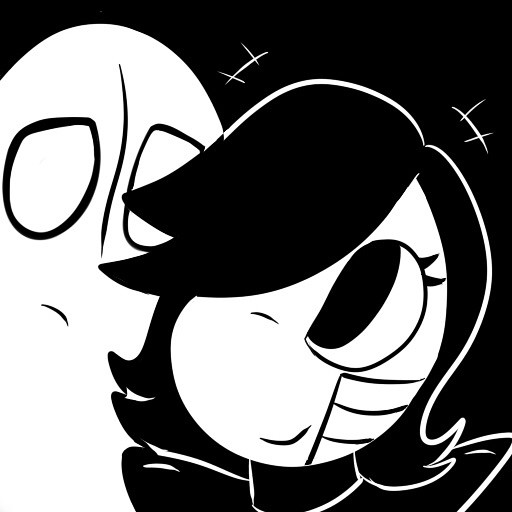Undertale follows the adventures of a child that falls into an underground world full of monsters and human remains. Monsters tend to hunt down humans out of fear, and the player character has to decide if they want to fight back or attempt to spare their attackers. One can either be a pacifist, a self-defending neutral character, or a serial murderer. A heartbreaking past haunts your playthrough, and all your past actions come into play if you decide to reset.
Image source: https://farm1.staticflickr.com/664/22406836197_e8219bc729_o_d.jpg
I had previously seen Undertale fanart of Sans, Papyrus and Frisk on my Tumblr, mainly involving bad puns and shipping with the game's goat-mom, Toriel. Aside from some character designs, I had no idea what the game was about. I started watching Markiplier's playthrough, got scared by Flowey, and started reading up on the details, including who the characters were. Then I started editing the Undertale page on TVTropes. The game gripped me, to the point where I wished that our class case studies involved the game since I could justify my disorganized thoughts. Obsession with the game's potential for violence grabbed me, especially as I watched the true pacifist run and dramatic boss fights.
Unlike most games, Undertale asks how much responsibility a player character has for taking another life. In a traditional game like Super Mario Bros., you have to kill the tortoises and Goombas because otherwise they will kill you, and in an RPG, as Flowey callously puts it, "It's kill or be killed". You have a choice to spare the monsters, and to even hear them out. On a Pacifist Run one can bond with all the characters, the way Aang from Avatar the Last Airbender or Wander from Wander Over Yonder does. You get to make them happy, to cheer up sad ghosts and imbue shy scientists with confidence about their crushes. You get to comfort those who believe they're beyond comforting. Markiplier during his run asks, "Why would anyone want to kill these monsters? They're cute!"
Image source: https://farm6.staticflickr.com/5691/22963006849_899560c75b_z_d.jpg
That question makes me agonize over the more violent runs of the game. The genocide run is the run where you, the player character, decide to kill all the monsters, regardless of their threat level, and its existence freaks me out. Cuteness of the monsters aside, by logic you get a happier ending if you don't fight.
Why does it scare me? First, the fact that the game assumes that a player would be that callous. As mentioned before, one could technically do a similar run in Pokemon, counter-intuitive as it would be to make every wild Pokemon faint and not capture any, but the game wouldn't call you out for it, any more than Minecraft would call you out for hunting down digital spiders and octopi. Jacksepticeye as of now is doing a genocide run, undoing the happy ending he's provided for his characters, since his viewers have requested such a thing. I cannot believe that so many people would ask that, to disassociate from these three-dimensional characters that have to fight tooth and nail for their happiness.
 |
| The ghost on the right is always sad but you can cheer him up. |
Second, the acknowledgement that players can be so violent calls too much to the real world. I prefer to play games and read stories that have an escapist sense, where we can be someone else and while we might learn something like history, mathematics, character development or logic -- I grew up on edutainment gaming like Jump Start and Carmen Sandiego-- we don't get severe wake up calls or tragic endings. Oftentimes the player has to resort to violence out of necessity, say in Minecraft if archers shoot and zombies walk, but in edutainment games the worst that one could do was blow up an asteroid aimed at a satellite, or feed a hungry plant monster a chemical sedative. When I read the news, actions have consequences. Our hateful words echo across the Internet and television far more strongly than our positive words do, and our more extreme sentiments can lead to massive tragedies. Children often suffer in the crossfire, and people often reduce victims to statements, or to blemishes on a seemingly perfect landscape. Seeing these attitudes reflected in a fantasy world, where we have more free agency to act as a human being, for better or for worse, hits too close to home.
Third, the varying endings that resort from the player characters' choices unsettle me, in their degree of happiness or tragedy. Most of the edutainment games that I played, unless they were for kindergarten for first grade, had a very linear progression, in that one has to complete a set of activities to get the rest of the story and cannot deviate from the set path. When you have critical choices in a game, as you do in life, choices become paralyzing, more so when one sees the consequences of bad ones. Undertale's player character if he or she wants to progress cannot stay with goat-mom Toriel and eat butterscotch pie with her, any more than one can stay in Mettaton's hotel or in the Temmie village. Yet to go forward comes with its risks, of defying Toriel to leave her, of finding yourself with monster blood on your hands, or dust as it were. You can either break a lot of hearts, or kill a lot of monsters.
 |
| When you want a scene to break your heart . . . |
Undertale is phenomenal and yet devastating in how it asks gamers, atypical or not, to shed typical gaming behavior. A game had to ask those questions at some point, at what a person would do if they have the option to play without fighting. I hope that if I do play a game, however, that watching a Pacifist run will not hinder me from diving into a new world, to gain more experience.


No comments:
Post a Comment